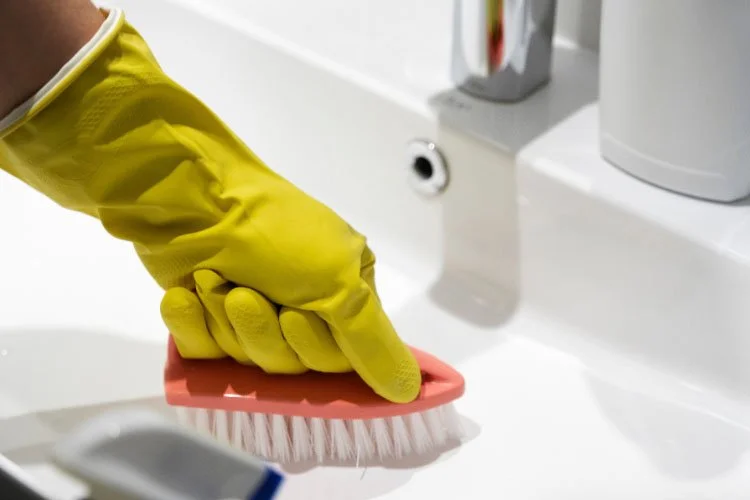How Cleaners Ensure a Safe Environment in Homes with Chemical Sensitivities
Oct 30, 2025
For individuals with chemical sensitivities, even small amounts of cleaning products can trigger headaches, skin irritation, breathing difficulties, or allergic reactions. This makes cleaning feel like a balancing act—maintaining a clean home without aggravating health issues. Professional cleaning services have the expertise and specialized products needed to achieve that balance safely and effectively.
Whether it’s a home with asthma sufferers, allergies, or chemical sensitivities, professional cleaners tailor their methods to protect both indoor air quality and the well-being of everyone living there.
1. Understanding Chemical Sensitivities in the Home
Chemical sensitivities can vary widely, but they often stem from exposure to harsh cleaning agents, artificial fragrances, or aerosol sprays. Even products labeled as “fresh-scented” or “antibacterial” can contain volatile organic compounds (VOCs) that linger in the air long after cleaning is done.
Common triggers include:
Ammonia or bleach-based cleaners
Strong artificial fragrances and air fresheners
Aerosol sprays and disinfectants
Solvents in furniture or surface cleaners
Professional cleaners understand that every client’s tolerance level is different. Their first step is identifying what triggers reactions and adjusting their cleaning plan accordingly.
2. Using Eco-Friendly, Non-Toxic Cleaning Products
One of the main ways cleaning professionals protect sensitive homeowners is by using eco-friendly and hypoallergenic cleaning solutions. These products are designed to be effective without relying on harsh chemicals or artificial additives.
Safe product choices often include:
Plant-based cleaners that rely on natural surfactants to remove dirt and grime.
Fragrance-free and dye-free products to avoid triggering allergies or headaches.
Vinegar or baking soda-based solutions for natural disinfection and deodorizing.
Certified green cleaning brands that meet environmental and safety standards.
These alternatives not only reduce chemical exposure but also leave behind cleaner air and safer surfaces—especially important in homes with children, pets, or people with respiratory conditions.
3. Preventing Air Contamination During Cleaning
Air quality plays a major role in creating a safe environment for those with sensitivities. Professional cleaners take extra precautions to minimize airborne particles and chemical residues.
Their techniques may include:
Proper ventilation: Opening windows or using exhaust fans during and after cleaning.
HEPA-filter vacuums: These capture dust, pollen, and microscopic irritants that regular vacuums can release back into the air.
Microfiber cleaning cloths: They trap dust instead of scattering it, reducing airborne allergens.
Avoiding aerosols and sprays: Professionals often use pump bottles or wipes to limit fine mist exposure.
By managing airflow and using low-emission methods, cleaners maintain a fresh and breathable indoor environment.
4. Tailoring Cleaning Plans for Sensitive Clients
Every household is unique, and professional cleaners recognize the importance of customizing their approach. Before starting a job, they often ask detailed questions to understand specific sensitivities and preferences.
Typical adjustments may include:
Using only client-approved cleaning solutions.
Testing a small area first before using a new product.
Adjusting cleaning frequency or depth to reduce odor buildup.
Avoiding certain ingredients like chlorine, ammonia, or sulfates.
This personalized care ensures that cleaning remains both effective and safe—without discomfort or risk to anyone in the home.
5. Safe Surface and Fabric Cleaning Practices
Some cleaning chemicals can linger on fabrics, carpets, and surfaces, continuing to emit odors or irritants. Professionals follow safe cleaning techniques to prevent residue buildup and maintain freshness.
These include:
Steam cleaning: Uses hot water vapor to sanitize surfaces without harsh chemicals.
Rinsing after disinfection: Ensures no leftover product remains on counters or floors.
Drying thoroughly: Prevents mold or mildew, which can worsen sensitivities.
Cleaning soft furnishings carefully: Using mild, pH-balanced cleaners designed for delicate materials.
Each step contributes to a cleaner, healthier home environment that’s truly comfortable for those with chemical sensitivities.
Conclusion
For those living with chemical sensitivities, cleaning shouldn’t come at the cost of comfort or health. Professional cleaners are trained to use gentle, eco-friendly methods that effectively remove dirt, allergens, and bacteria—without exposing your household to harsh chemicals or strong scents.
While DIY cleaning can help with light upkeep, expert care ensures every product and method used supports a safer, cleaner home environment.
Want to experience a fresh, spotless home without the worry of chemical exposure? Contact Sweep Cleaning Services Burnaby today to request a quote. Our team specializes in safe, non-toxic cleaning solutions designed to protect your health while keeping your space beautifully clean.
Let’s Keep In Touch

